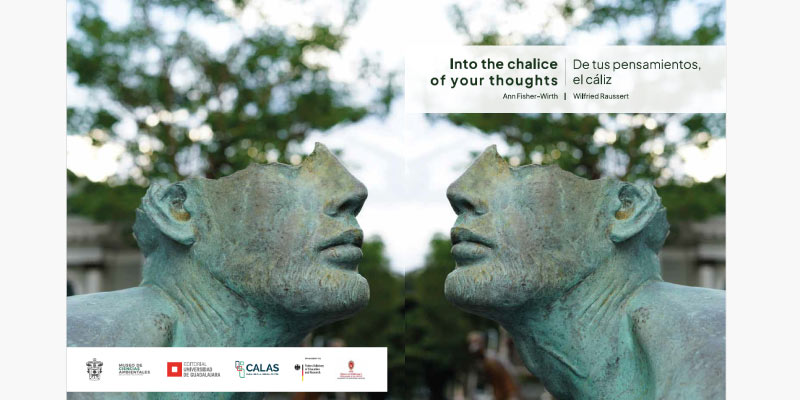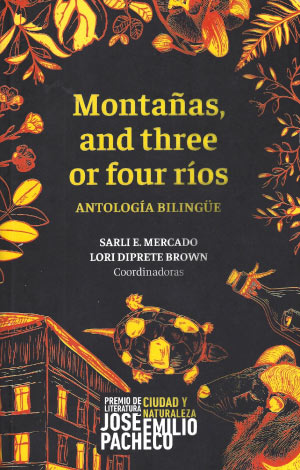
Sarli E. Mercado is a literary critic, author, and teaching professor at the Department of Spanish and Portuguese at UW–Madison studying the life and work of contemporary Latin American poets. She graduated from Boston University with a PhD in contemporary Latin American poetry, working under the mentorship of the Argentine writer Alicia Borinsky. To Mercado, “working with her — being guided by this poet, writer, and scholar — was such an inspiration.”
Their collaboration set the tone for Mercado’s career. Many of her current projects are a culmination of partnerships with various organizations across the UW–Madison campus and beyond. Her current collaborations and affiliations include the Latin American, Caribbean and Iberian Studies Program, the 4W Initiative, the Nelson Institute for Environmental Studies, and the Museum of Environmental Sciences at the University of Guadalajara, Mexico, and more.
How did you first become interested in poetry?
Part of the story begins during my childhood when my family and I had to leave our home country of Nicaragua due to war and political unrest in the 1980s. Migration and exile have defined my life since then. After a year in Honduras, we arrived in the United States where I began my studies again. At Bard College as an undergraduate and later in Boston as a doctoral student, reading the works of exiled Latin American writers, I recognized similar experiences to my own; this inspired me to study them further.

Were there any poets in particular that stood out to you?
While working with Professor Borinsky in the Writing in the Americas Program, I met two Argentine Jewish writers, Juan Gelman and Luisa Futoransky. Their poems spoke of experiences of displacement, exile, political violence, the disappeared, memory and so much more. They became part of my first book, Cartografías del Destierro (Cartographies of Exile). From these writers I learned that poetry is indeed a process of translation, a profound way of reading our reality and ourselves.
“We can experience poetry as a deep form of understanding ourselves and our connection to the environment,”
— Sarli Mercado
How has this transferred over to your work at UW–Madison?
In the past eight years, at UW–Madison, I’ve joined different transdisciplinary projects linked to academic units: the Latin American, Caribbean and Iberian Studies Program (LACIS), the Nelson Institute, and the School of Human Ecology. Colleagues Alberto Vargas, the associate director of LACIS and Lori DiPrete Brown, director of the 4W initiative (Women & Wellbeing in Wisconsin & the World) invited me to collaborate in UW–Madison’s partnership with the Museum of Environmental Sciences at the University of Guadalajara (MCA). This meant a collaboration with the award-winning writers of the José Emilio Pacheco City and Nature Literature Prize founded by the MCA under the direction of Eduardo Santana, who is a UW–Madison alum and a Nelson Institute professor.
In 2018, Lori and I created the Women in Translation Circle, an international group of translators, writers and literary scholars. We’ve invited them to lead translation and creative writing workshops, book presentations and other lectures; they’ve also collaborated in the translation of an anthology by award-winning writers of the Pacheco prize, among other poetic projects. Our goal has been to reach out to the community of scholars, writers and other artists — both inside and outside of academia —including UW–Madison students.
What does your current work look like?
Inspired by my collaboration with the Museum of Environmental Sciences, the Nelson Institute and other scholars and colleagues, my courses on urban design and cultural studies in Latin America include topics on urban ecology and environmental studies, as well as rural or non-urban territories. I also created a course on Translating Cultures and Disciplines. My recent scholarly research on “lyrical landscapes” in poetry and visual arts combines both approaches. I study Pacheco’s poetic view of Mexico City, the “post-apocalyptic,” or “post-city,” as he called this modern megalopolis in reference to its overpopulation and nonstop growth or its environmental impact on the territory.

Did you study the work of other poets, in addition to Pacheco?
My study includes the beautiful poems of Uruguayan writer Marosa Di Giorgio, whose inquiry into the meaning of nature and our understanding of it in relation to culture is profound. Her work engages in a dialogue with Mexican street artist Sego y Obval murals, a unique bestiary and fusion of fauna and flora inspired by his observations of the coastal region of Oaxaca. Biological and mythological concepts are linked in his work, illuminating the mutual impact between urban and rural spaces. I am currently working on the “western haikus” of Mexican writer León Plascencia Ñol, the landscapes of Uruguayan poet Silvia Guerra, and the visual blue poems in Adrift in Blue by Argentinean photographer Nicolas Janowski—a new chapter which I titled Of Meaningless Passwords: Transparencies and Photosynthesis in Latin American Eco-poetics.
What makes art and poetry such effective communication methods when talking about ecology?
I really like what the Venezuelan writer Santiago Acosta said to me about this precise idea. For him, art and poetry allow us to rethink and understand categories that seem unmeasurable or disproportionate — such as environmental crises or global warming — making them less abstract, more approachable and concrete. Ecology, thought of as a form of poetic knowledge, for us should not be only about exploring a new language that reconnects the reader with the earth, it is also a way to illuminate the false dichotomy between what we call nature and culture. It allows us to rethink concepts such as city, nation, democracy, or humanity, and a way to reject the hierarchies and artificial boundaries that we’ve created.
What’s one piece of advice you would give to UW–Madison students interested in poetry?
To embrace the poem or poetry as a slow and profound way of reading our reality, particularly in an age of artificial intelligence driven by technological progress, speed, and wonder that can be distracting. Poetry as an act of translation is also a unique code or language of humanity’s profound intelligence connected to our emotions, a ritual and a healing practice. We can experience poetry as a deep form of understanding ourselves and our connection to the environment and the “larger community of soils, waters, plants and animals,” as Aldo Leopold says.